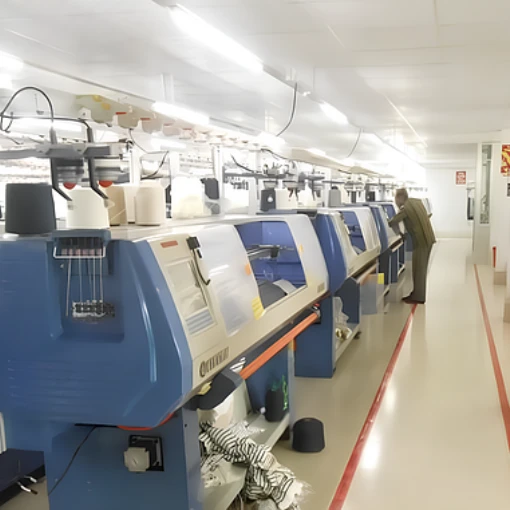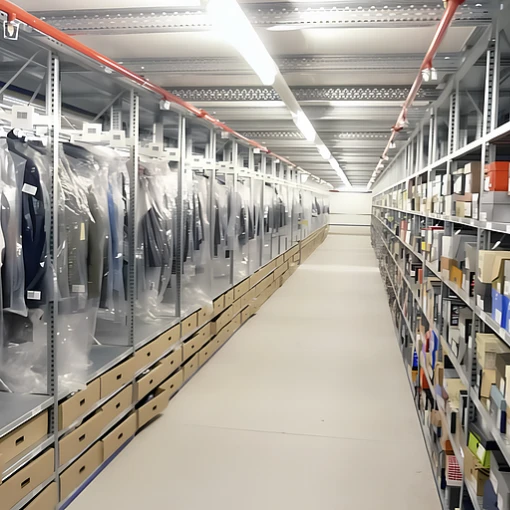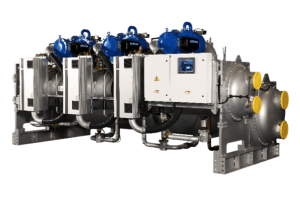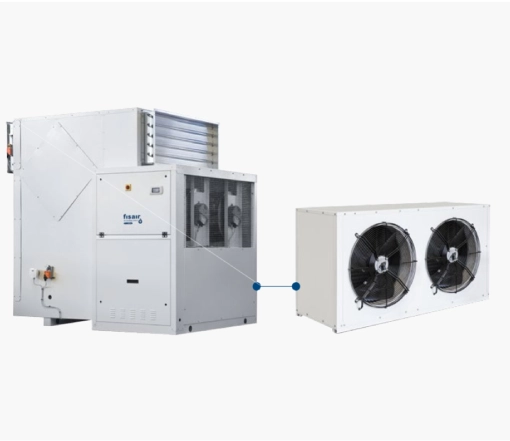Textile & Garments HVAC Solutions
In the textile and garments industry, maintaining optimal environmental conditions is essential for product quality and operational efficiency. Specialized HVAC for textile Industry and garment industry plays an important role in managing temperature, humidity, and air quality across various areas of textile manufacturing and processing. Discover how tailored HVAC systems can enhance your facility’s performance, from production to packaging and beyond.
Importance of HVAC Solutions For Textile and Garments
In the textile and garments industry, HVAC systems are essential for controlling temperature, humidity, and air quality. They prevent issues such as moisture damage, ensure consistent production conditions, and boost overall efficiency. Proper HVAC solutions help maintain high product quality, minimize defects, and support seamless operations from manufacturing through to packaging. By providing a stable environment, HVAC systems play a key role in enhancing performance and reliability in textile and garment production.
HVAC Solutions for Spinning & Denim Mills
In spinning and denim mills, precise HVAC systems are mandatory for managing heat from machinery and maintaining stable temperature and humidity levels. Effective air conditioning prevents fabric distortion and ensures a consistent production environment.

Maintains optimal conditions for fabric quality
Reduces fiber breakage and static
Provides a stable working environment
Ensures superior denim and yarn production
HVAC Solutions for Jacquard Factory
Jacquard Factory air conditioning provides rigorous environmental control in clean rooms to prevent contamination. HVAC systems manage temperature, humidity, and air quality to meet high cleanliness standards and protect sensitive materials.

Reduces variances for homogeneous fabric
Adapts settings to suit production needs
Increases productivity and staff morale
Enhances worker health and keeps equipment dust-free
HVAC Solutions for LEED Garments Factory
In LEED-certified garment factories, HVAC systems are essential for maintaining stable environmental conditions in laboratories. They regulate temperature and humidity, ensuring a controlled environment that supports accurate testing and research.

Reduces consumption and costs
Ensures a healthy environment
Supports LEED certification
Maintains precise temperature and humidity
HVAC Solutions for Storage
In storage areas for textiles and garments, HVAC systems are important for regulating temperature and humidity. This prevents damage to products and preserves packaging materials, ensuring that inventory remains in optimal condition.

Regulates temperature and humidity to protect fabric integrity
Maintains an optimal environment for preserving textiles
Reduces operational costs and enhances energy efficiency
Prevents issues like mold and mildew, ensuring a clean workspace
HVAC Solutions for Factory Offices
In factory offices, effective HVAC solutions manage temperature and humidity, enhancing comfort and supporting operational efficiency.

Maintains a comfortable and consistent environment
Cuts down on costs and supports green practices
Enhances air quality and worker well-being
Allows real-time adjustments to meet office needs
Why Textiles and Garments Requires Top HVAC Solutions?
In the textiles and garments industry, maintaining optimal environmental conditions is important for ensuring product quality and operational efficiency. Top HVAC solutions play a vital role in this sector by addressing specific needs and challenges:
Precise Temperature Control
Accurate Humidity Management
Enhanced Air Quality
Energy Efficiency
How to Choose the Right HVAC Provider in Bangladesh?
When choosing an HVAC provider in Bangladesh for the textile and garments industry, focus on their experience, expertise, and proven track record in similar applications. Select a provider who offers customized solutions tailored to your facility’s needs and provides comprehensive maintenance services. It’s also important to choose a provider known for quality products and professional service.
For a reliable option, consider Tritech. With extensive industry expertise and a commitment to high-quality HVAC solutions, Tritech delivers tailored solutions and excellent customer service, making them a strong choice for your textile and garments HVAC needs.
Optimize your food operations with Tritech’s expert HVAC solutions
Recommended Products for the Textile and Garments Industry HVAC Solution
For effective HVAC solutions in the textile and garments industry, selecting the right equipment is obvious. Here’s a detailed look at recommended products:

Chillers
For textile and garment facilities, several top chillers offer excellent performance. The SMARDT Oil-Free Chiller provides high energy efficiency and low maintenance, with an eco-friendly design. The Dunham Bush Chiller is known for its robust durability and reliable cooling. Daikin Chillers feature advanced technology and energy savings, while Midea Chillers offer cost-effective and dependable performance. The Kawasaki Absorption Chiller uses thermal energy for efficient cooling, ideal for facilities with waste heat or cogeneration systems.

Dehumidifier
For managing humidity in textile production and storage, the Yake Dehumidifier is renowned for its reliability and energy efficiency, effectively maintaining optimal humidity levels to prevent mold and mildew, thus preserving the quality of textiles. Similarly, the Fisair Dehumidifier offers advanced moisture control technology, ensuring precise humidity management to safeguard the integrity of textiles and garments, creating an ideal environment for both production and storage.
Final Thought
Effective HVAC solutions are vital for ensuring product quality and operational efficiency in textile and garment facilities. By maintaining optimal temperature, humidity, and air quality, these systems prevent issues and support smooth operations. Choosing the right equipment and partnering with a skilled provider can significantly enhance facility performance and contribute to the overall success of your textile operations.
FAQs
In textile and garment production, HVAC systems are important for controlling temperature and humidity, preventing defects, and ensuring consistent product quality.
To support cleanroom operations, HVAC systems maintain rigorous environmental conditions to avoid contamination and protect sensitive materials.
In packaging areas of textile manufacturing, HVAC systems prevent product damage by controlling temperature and humidity, preserving packaging materials, and ensuring product quality.
HVAC systems in textile facilities need regular maintenance twice a year. Regular maintenance is essential to ensure efficient operation and compliance with industry standards.
Yes, energy-efficient HVAC systems can lower operating costs by optimizing temperature and humidity control while minimizing energy consumption.
In the R&D unit for the textile industry, HVAC systems provide precise climate control, essential for creating accurate testing conditions and supporting successful product development.